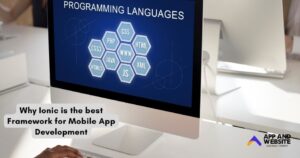Are you thinking of starting a web or app development project but can’t decide between MEAN and MERN stacks? Choosing the right technology stack is more than just a technical decision; it’s the foundation that will shape your project’s development, performance, and future growth. Both MEAN and MERN are popular JavaScript-based stacks that offer powerful tools for developers. In this guide, we’ll go through the similarities and differences between MEAN and MERN, explaining their components, benefits, and limitations. This comparison will help you with the knowledge to pick the ideal stack for your project in 2024. Let’s get started!
What Do You Mean by Stack?
In the world of software development, a “stack” refers to a combination of technologies used to build a web or mobile application. A stack typically includes everything needed for the development process, from front-end interfaces (what users interact with) to back-end servers and databases. This toolkit allows developers to create, test, and deploy applications efficiently. Similarly, each stack has its own set of components that work together seamlessly, providing a structured environment that developers can leverage to build powerful, dynamic applications. Choosing the right stack is critical as it impacts the app’s functionality, scalability, and maintainability.
What is MEAN Stack Development?
MEAN stack is basically an acronym for four key technologies: MongoDB, Express.js, AngularJS, and Node.js. This combination creates a powerful platform for developing web applications. MongoDB serves as the database, storing data in a flexible, JSON-like format. Express.js acts as the back-end web framework running on Node.js, simplifying the server-side scripting. AngularJS is used on the front-end to build interactive and dynamic user interfaces. The entire stack operates on JavaScript, making it a cohesive environment for developers as they use the same language across all layers of the application, streamlining the development process and reducing compatibility issues.
What is MERN Stack Development?
MERN stack is similar to MEAN but swaps AngularJS for React.js, another popular JavaScript framework. This stack consists of MongoDB, Express.js, React.js, and Node.js. MongoDB provides a robust database system, while Express.js handles the server-side operations. React.js is used for building user interfaces, renowned for its virtual DOM that offers exceptional performance and user experience enhancements. Node.js powers the server-side, enabling fast and scalable network applications.Thus, the use of JavaScript across all layers of the stack makes MERN highly efficient for developing modern web applications with rich user interfaces and real-time capabilities.
Benefits of Choosing MEAN Stack for Development
The MEAN stack offers a unified approach to web and app development, utilizing JavaScript across all layers of the application. This integration promotes consistency and streamlines the development process, making it a popular choice among developers. Developers can build efficient, scalable, and modern applications by using all parts of the MEAN architecture effectively.
Here are some key benefits of choosing the MEAN stack for development.
-
JavaScript Everywhere:
The MEAN stack uses JavaScript for both client-side and server-side development. This uniformity allows developers to use a single language throughout their project, which simplifies the development process and reduces the learning curve for new developers. It also means that the same developers can manage the entire codebase, enhancing efficiency and reducing the chances of miscommunication between different team members.
-
Full-stack Development:
With MEAN, you get all the necessary tools to handle every aspect of web development—from managing databases with MongoDB to processing requests on the server with Node.js, and creating dynamic front-end interfaces with AngularJS. This makes the MEAN stack a comprehensive solution for developers looking to work on both the front-end and back-end without needing to learn multiple languages or rely on more than one framework.
-
JSON (JavaScript Object Notation) Support:
JSON is a lightweight data interchange format, and it is natively used by both MongoDB and AngularJS, which simplifies data transfer between the client and server. This uniform data format throughout the MEAN stack reduces the need for reformatting or data translation, leading to quicker and more efficient data handling. This is particularly beneficial in applications that involve large volumes of data that need to be transferred frequently across different layers of the application.
-
Open Source and Community Support:
Each technology in the MEAN stack is open source and backed by a robust community of developers. This support not only means that the technologies are continuously improved and updated but also ensures a vast array of resources such as documentation, forums, and third-party tools are available. For developers, this translates to readily available help in solving problems, sharing best practices, and reducing development costs.
-
Rich Ecosystem and Libraries:
AngularJS, part of the MEAN stack, comes with a comprehensive suite of tools and libraries designed to enhance functionality and reduce the time needed for routine programming tasks. This rich ecosystem allows developers to add advanced features and functionalities to their applications without spending excessive time coding them from scratch.
-
Code Reusability:
One of the significant advantages of using MEAN is the reusability of code. Thanks to the uniformity of JavaScript across the stack, developers can reuse code across different parts of the application, reducing redundancy and speeding up the development process. This can be particularly useful in large projects or applications where maintaining code efficiency and consistency is paramount.
Disadvantages of MEAN Stack
While the MEAN stack offers several advantages for web and app development, it is also accompanied by some challenges that can affect certain projects. Understanding these limitations is essential for developers to make informed decisions and plan strategies to mitigate potential issues. Below, we explore some of the key disadvantages of using the MEAN stack, which might influence your choice depending on your project requirements.
-
Performance in CPU-bound Tasks:
Node.js, a core component of the MEAN stack, is not optimal for CPU-intensive operations. It operates on a single-threaded, event-driven architecture, which excels in handling I/O-bound tasks but can become a bottleneck when dealing with heavy computation tasks. Applications that require significant data processing, complex calculations, or image processing might suffer from slower performance. Developers might need to integrate additional technologies or optimize the code significantly to overcome these performance hurdles.
-
Debugging Complexity:
Debugging applications in the MEAN stack can be complex due to the asynchronous nature of JavaScript and Node.js. The non-blocking I/O operations can lead to unexpected issues that are hard to track down and resolve. This complexity is compounded by the fact that a single programming language (JavaScript) is used across different layers, making it tricky to isolate and diagnose issues efficiently. Developers need to be well-versed with advanced debugging tools and techniques to effectively manage this aspect.
-
Scalability Challenges in Microservices Architectures:
While MEAN stack applications can generally scale horizontally by adding more hardware resources, they may face challenges when implemented in a microservices architecture. The interconnected nature of MEAN’s components can lead to complications when services need to scale independently. Developers might encounter issues with managing database connections and ensuring consistent performance across different services. This may require additional configuration and more sophisticated orchestration to maintain scalability and reliability.
-
SEO (Search Engine Optimization) Challenges:
Applications built with AngularJS, the front-end framework in the MEAN stack, are primarily client-side rendered. This can present challenges for SEO as the content is dynamically generated and may not be immediately available to search engine crawlers when they index the page. Developers often need to implement server-side rendering or pre-rendering techniques to improve SEO, which can add complexity and overhead to the project.
-
Tooling and Integration Complexity:
The MEAN stack, while powerful, involves integrating several different technologies, which can complicate the setup and ongoing maintenance of the development environment. Each component of the stack (MongoDB, Express.js, AngularJS, Node.js) comes with its own set of tools and plugins. Managing compatibility between these tools and ensuring they work harmoniously can require additional effort and expertise, potentially increasing the time and cost of development projects.
Benefits of Choosing MERN Stack for Development
The MERN stack, similar to MEAN, is an assembly of powerful technologies that work seamlessly together to build dynamic web applications. By replacing AngularJS with React.js, MERN offers a different set of advantages that can be particularly beneficial for certain types of projects. The integration of React in the stack brings enhanced capabilities for building interactive user interfaces and improving overall user experience. Here are some of the key benefits that make MERN stack a favored choice among developers for creating modern web applications.
- Full-stack Efficiency:
The MERN stack provides a streamlined workflow and a unified language base (JavaScript), facilitating full-stack development. From the server-side logic with Node.js and Express to the client-side interface with React, developers can handle all aspects of the application with a single programming language. This simplifies the development process, reduces context switching, and allows for a more cohesive development experience. It also enables quicker prototyping and faster go-to-market times, which are crucial in today’s fast-paced tech environment.
- Open-source and Cost-effective:
All components of the MERN stack—MongoDB, Express.js, React, and Node.js—are open source. This not only reduces software costs significantly but also provides developers access to a large repository of shared tools and modules available through the community. The open-source nature ensures that the stack is continually updated, secure, and robust, thanks to contributions from developers around the world. Additionally, it allows for customization and scalability without being tied to vendor-specific rules or fees.
- Flexibility and Scalability:
MERN stack applications are highly scalable due to the non-blocking architecture of Node.js and the flexible data modeling of MongoDB. This combination allows developers to handle large volumes of data and user requests efficiently. React’s component-based architecture makes it easy to scale up the application’s frontend while maintaining performance and manageability. This flexibility is ideal for businesses looking to grow, as they can scale their solutions in response to user demand without compromising on performance.
- JavaScript-based:
Since MERN is an all-JavaScript stack, it simplifies the development process by using a single language across both client and server sides. This creates a more streamlined development environment and reduces the learning curve for new developers. JavaScript’s widespread usage and support mean that developers have access to extensive resources, libraries, and community support, making it easier to solve problems and implement advanced features in applications.
- Strong Community Support:
Each technology in the MERN stack has a robust and active community. React, for instance, is maintained by Facebook and has a vast ecosystem of plugins and extensions. This strong community support provides a wealth of resources, including tutorials, forums, and third-party packages, which can help developers quickly resolve issues and learn new techniques. Community support also means frequent updates and security patches, ensuring the technology remains secure and cutting-edge.
- Real-time Web Applications:
MERN is highly suitable for developing real-time web applications such as live chatting apps, online gaming, and collaboration tools. The non-blocking nature of Node.js ensures efficient data processing and responsiveness, essential for real-time applications. React’s efficient update mechanisms make it possible to instantly reflect changes in the user interface without reloading pages, enhancing user experience and engagement.
Choosing the MERN stack for your development project offers a blend of performance, efficiency, and a vibrant ecosystem, making it an excellent choice for enterprises aiming to build responsive, scalable, and cost-effective web applications.
Disadvantages of MERN Stack
Despite its many advantages, the MERN stack also comes with its own set of challenges that developers need to be aware of. These drawbacks can impact certain aspects of development and may require additional considerations or workarounds to address effectively. Understanding these limitations allows developers to make informed decisions and devise strategies to overcome potential hurdles. Here, we delve into some of the key disadvantages of using the MERN stack for web application development.
- Tooling and Documentation Fragmentation:
While each component of the MERN stack has its own set of tools and documentation, integrating them seamlessly can sometimes be challenging. Developers may encounter compatibility issues or inconsistencies between different tools, which can slow down the development process and increase complexity. Ensuring that all tools and documentation align properly requires careful planning and coordination.
- SEO Limitations:
MERN stack applications, especially those built with React.js, often rely heavily on client-side rendering. This can present challenges for search engine optimization (SEO) as search engine crawlers may have difficulty indexing content rendered dynamically on the client-side. Implementing server-side rendering or other SEO techniques may be necessary to ensure optimal visibility and ranking on search engine results pages.
- Learning Curve:
While JavaScript is a widely-used and accessible language, mastering the intricacies of the MERN stack, particularly React.js, can require a steep learning curve for developers new to the ecosystem. React’s component-based architecture and concepts such as virtual DOM may take time to grasp fully. Additionally, keeping up with the frequent updates and advancements in the React ecosystem can further contribute to the learning curve.
- Isomorphic Code Complexity:
Isomorphic (or universal) JavaScript refers to code that can run both on the client and server-side. While isomorphic code can improve performance and SEO by enabling server-side rendering, implementing it in MERN stack applications can be complex. Developers need to ensure that the codebase is structured in a way that allows for seamless execution on both environments, which may require additional planning and development effort.
- Limited Relational Database Support:
MongoDB, the default database choice in the MERN stack, is a NoSQL database, which may not be suitable for all types of applications, particularly those that require complex relational data modeling. While MongoDB offers flexibility and scalability, it lacks some of the features and capabilities of traditional relational databases like MySQL or PostgreSQL. This limitation may necessitate additional workarounds or compromises in the data modeling and querying processes.
Navigating these challenges effectively requires a thorough understanding of the MERN stack’s strengths and weaknesses, along with careful planning and implementation strategies to mitigate potential issues.
The Difference Between MEAN Stack vs MERN Stack
| Aspect | MEAN Stack | MERN Stack |
| Front-end Framework | AngularJS | React.js |
| DOM Manipulation | Two-way data binding | Virtual DOM |
| Learning Curve | Steeper learning curve due to Angular’s complexity | Relatively simpler learning curve with React.js |
| SEO Friendliness | Requires server-side rendering for SEO optimization | Offers server-side rendering for better SEO |
| Database | MongoDB (NoSQL) | MongoDB (NoSQL) |
| Real-time Web Apps | Can be achieved but may require additional setup | Well-suited for real-time web applications |
These differences play a significant role in determining which stack is better suited for specific project requirements. MEAN and MERN each have their unique strengths and weaknesses, so understanding these distinctions can help developers make informed decisions when choosing the right stack for their development projects.
Popularity of the MEAN Stack vs MERN Stack
Both the MEAN and MERN stacks have gained significant popularity in the web development community, with each stack being favored for different reasons. MEAN, with AngularJS at its forefront, gained early traction due to its robust features and extensive documentation. However, as React.js emerged as a powerful alternative to AngularJS, the MERN stack started gaining momentum, particularly for its simplicity and flexibility in building dynamic user interfaces.
In recent years, the MERN stack has seen a surge in popularity, driven by React’s efficient virtual DOM and component-based architecture. React’s ease of learning and vast ecosystem of libraries and tools have attracted developers looking for modern, responsive web development solutions. Additionally, the MERN stack’s compatibility with server-side rendering has made it more SEO-friendly, further boosting its appeal for businesses seeking better online visibility.
While MEAN still maintains a strong presence, especially in enterprises with established AngularJS projects, the MERN stack’s rising popularity reflects the evolving preferences and priorities of developers in the web development landscape. Ultimately, the choice between MEAN and MERN depends on factors such as project requirements, team expertise, and long-term scalability goals.
Which Stack Should You Choose for Your Web/App Development
Choosing between the MEAN and MERN stacks depends on various factors, including project requirements, developer expertise, and long-term goals. If you prioritize a robust, full-stack solution with a powerful front-end framework, MEAN might be the right choice, especially if your team is experienced with AngularJS and prefers its two-way data binding capabilities. However, if you’re looking for a more flexible and SEO-friendly solution with a simpler learning curve, MERN could be the better option, leveraging React.js for efficient virtual DOM rendering and server-side rendering capabilities.
Consider the specific needs of your project, such as real-time capabilities, scalability requirements, and database preferences. MEAN might excel in scenarios where real-time web applications are crucial, while MERN might offer better SEO optimization and flexibility for rapidly evolving projects. Additionally, assess your team’s familiarity with the respective technologies and their ability to adapt to new frameworks.
Ultimately, both MEAN and MERN stacks offer powerful tools and frameworks for web and app development, so weigh the pros and cons carefully before making your decision. Consider consulting with experienced developers or technology experts to ensure you choose the stack that aligns best with your project goals and constraints.
How Can App and Website LLC Help To Choose The Right Tech Stack For Your Project?
At App and Website LLC, we understand the importance of selecting the right technology stack for your development project. We specialize in providing customized solutions to meet your specific requirements, whether you’re considering MEAN stack development services or MERN stack development services.
With our expertise in both MEAN and MERN stacks, we can guide you through the decision-making process, taking into account factors such as project scope, scalability needs, and desired features. Our consultants will assess your project goals and constraints to recommend the most suitable stack that aligns with your objectives and budget.
Furthermore, our development team is proficient in leveraging the latest technologies and best practices to deliver high-quality, scalable applications. Whether you need real-time web applications, SEO-friendly websites, or robust mobile apps, we have the expertise to bring your vision to life.
By partnering with App and Website LLC, you can rest assured that you’re making an informed decision about your technology stack, setting your project up for success from the outset. Let us help you choose the right stack and transform your ideas into reality.
Conclusion
In conclusion, both MEAN and MERN stacks offer powerful tools for web and app development, each with its own strengths and weaknesses. MEAN excels in full-stack efficiency and real-time web applications, while MERN provides flexibility, SEO-friendliness, and a simpler learning curve. When choosing between the two, consider your project’s requirements, team expertise, and long-term goals. Partnering with experienced developers, like App and Website LLC, can help to simplify these decisions and ensure a successful outcome. Ultimately, the right choice depends on your specific needs and priorities, so weigh the options carefully to select the stack that best fits your project.






